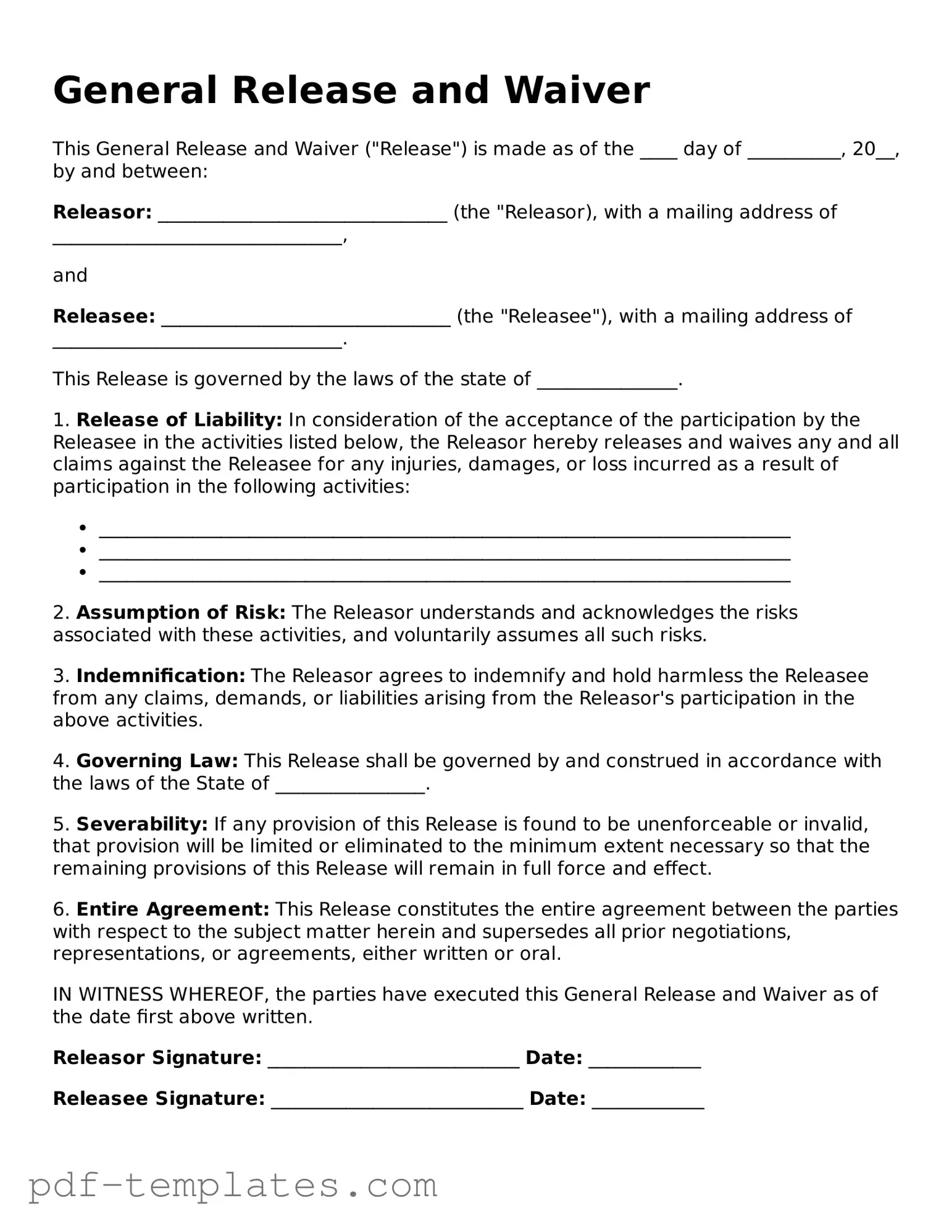A waiver is a document that allows one party to relinquish their right to pursue legal action against another party. Like a Release of Liability form, a waiver typically involves an acknowledgment of risk. When individuals sign a waiver, they accept that they understand the potential dangers involved in an activity and agree not to hold the organizer responsible for any injuries or damages that may occur. This creates a mutual understanding of the risks and responsibilities involved.
Indemnity agreements are another similar document. These agreements protect one party from being held liable for certain actions or outcomes. In an indemnity agreement, one party agrees to compensate the other for any losses or damages that arise from specific activities. Like a Release of Liability, indemnity agreements require clear communication about risks and responsibilities, ensuring that both parties understand their obligations.
Consent forms are often used in medical or research settings. They inform individuals about the nature of a procedure or study and seek their permission to proceed. Similar to a Release of Liability, consent forms require participants to acknowledge the risks involved. By signing, individuals give their informed consent, understanding that they cannot hold the organization liable for any adverse effects that may occur.
Assumption of risk forms share similarities with a Release of Liability. These documents are often used in sports and recreational activities. When individuals sign an assumption of risk form, they acknowledge that they understand the inherent risks associated with the activity. This acceptance can help protect the organization from legal claims if an injury occurs, as participants have agreed to take on those risks themselves.
Non-disclosure agreements (NDAs) are also relevant. While they focus more on confidentiality, they share the concept of limiting liability. NDAs protect sensitive information and outline the consequences of disclosing that information. Like a Release of Liability, they establish clear expectations and responsibilities between parties, helping to prevent misunderstandings and potential legal issues.
Settlement agreements can be compared to a Release of Liability in that they often involve the resolution of disputes. These documents outline the terms under which one party agrees to relinquish their right to pursue further legal action in exchange for compensation or other considerations. Both documents aim to provide closure and prevent future claims, making it clear what has been agreed upon.
Contracts for services often contain clauses similar to those found in a Release of Liability. These clauses may limit liability for certain types of damages or outline the responsibilities of each party. By clearly defining expectations and potential risks, these contracts help protect both parties from unforeseen issues that may arise during the course of their agreement.
Finally, insurance waivers are relevant to this discussion. These documents often accompany insurance policies and require individuals to acknowledge certain risks. By signing an insurance waiver, individuals may agree to certain terms that limit the insurer's liability in specific situations. This is akin to a Release of Liability, as both documents aim to clarify risks and responsibilities to protect against potential claims.
